Updated for 2025
Are you eyeing a fixer-upper property, dreaming of transforming it and selling for a sweet profit? Welcome to the world of real estate flipping! But wait, there’s a catch – you need money to buy and renovate that diamond in the rough. Enter flip loans, your potential financial ally in this venture. Let’s dive in to understand how these loans work and whether they’re right for you.
What are Flip Loans?
Imagine a special loan that’s designed just for buying and fixing up properties to sell quickly. That’s what flip loans are. Unlike regular home loans that you pay back over decades, flip loans are short-term and have a specific goal: to help you purchase and renovate a property to sell it for a profit.
Flip loans are still a go-to option in 2025 for real estate investors looking to renovate and resell properties quickly. With inventory tight in many housing markets, especially for move-in-ready homes, flipping remains a viable strategy — but comes with added pressure due to interest rate and market changes.
The Mechanics of Flip Loans
Think of it like a regular loan application, but faster and more focused on the property’s potential than your credit history. You’ll still need decent credit, but what’s more important is the promise of the property you want to buy.
While credit scores still matter, lenders in 2025 are placing greater emphasis on exit strategy and renovation scope. The property’s after-repair value (ARV) and your ability to sell quickly are under closer scrutiny, especially in regions with slowing demand.
Key Features of Flip Loans
These loans are quick affairs – you’re not meant to hold onto them for long. They often come with higher interest rates, meaning you’ll pay more over time, but the idea is you won’t have to pay for long if you sell your renovated property quickly. They cover not just the cost of buying the property but also the money you’ll need to fix it up.
These short-term loans (usually 6–18 months) come with higher interest rates — and in 2025, those rates may be even steeper than in recent years due to broader economic conditions. It’s essential to build holding costs into your budget, including property taxes, insurance, utilities, and loan interest.
The Ideal Candidate for a Flip Loan
You’re a good candidate if you’re experienced in real estate, understand the market, and are financially stable. But beginners with a solid plan can also be considered.
If you’re entering 2025 with experience in property renovation, a deep understanding of your local market, and a realistic resale plan, you’re in a strong position. Newer investors are still welcome, but lenders may require more documentation, a larger down payment, or higher interest rates than in the past.
Benefits of Using Flip Loans
With a flip loan, you get the money fast, which is great in a competitive market. They can provide the financial boost to purchase and renovate a property, potentially leading to a good profit when you sell.
Speed is still the top advantage. In competitive housing markets, being able to close quickly and fund renovations fast can make or break a deal. Many lenders in 2025 are now offering pre-approval tools or fintech-backed flip loan options, making the process faster — but also requiring borrowers to be more organized up front.
Risks and Challenges
Remember, higher interest rates mean higher costs. There’s also the risk of the property not selling for as much as you hoped or taking longer to sell, which can be financially stressful.
With construction costs still elevated in many regions and some housing markets cooling, flippers should be cautious. Overestimating resale value or underestimating rehab costs can eat into margins quickly. Plus, if Days on Market increase, you could be stuck paying interest longer than planned.
Choosing the Right Flip Loan Lender
Not all lenders are created equal. Look for ones with favorable terms, good interest rates, and a solid reputation. Compare your options before making a decision.
In 2025, it’s more important than ever to compare lenders. Look beyond the interest rate — examine fees, draw schedules, and flexibility around delays. Also check for any prepayment penalties or refinance restrictions, especially if the flip becomes a hold-and-rent situation.
Preparing to Apply for a Flip Loan
Do your homework. Understand the market, the property’s potential, and your own finances. The better prepared you are, the higher your chances of getting the loan.
Lenders want to see:
- Detailed renovation budget and timeline
- After-Repair Value (ARV) estimate
- Your experience or project partners
- Exit strategy (sale, refi, or rent)
Also consider including a project contingency fund in your plan — most flips run over budget or take longer than expected.
Conclusion
Flip loans can be a great tool for real estate investors, but they’re not without risks. Understand the costs, the process, and the market before diving in. With the right approach, these loans could help you unlock the potential of a property and turn a significant profit.
Flip loans in 2025 still offer powerful access to funding for short-term real estate investments — but they require tighter planning, more margin for risk, and a careful read of your local housing market. The tools are there — just be sure your numbers are real, not wishful thinking.
FAQ Section
Q: How long do I have to pay back a flip loan? A: Typically, 6 months to a few years.
Q: Can I get a flip loan with a low credit score? A: It’s possible, but having a better credit score improves your chances.
Q: Are flip loans only for experienced investors? A: No, beginners can apply too, but experience helps.
- Q: Are flip loans harder to get in 2025? A: Lenders are more cautious in 2025 due to interest rate volatility and market uncertainty. You’ll likely need a stronger plan and clearer numbers than in previous years.







